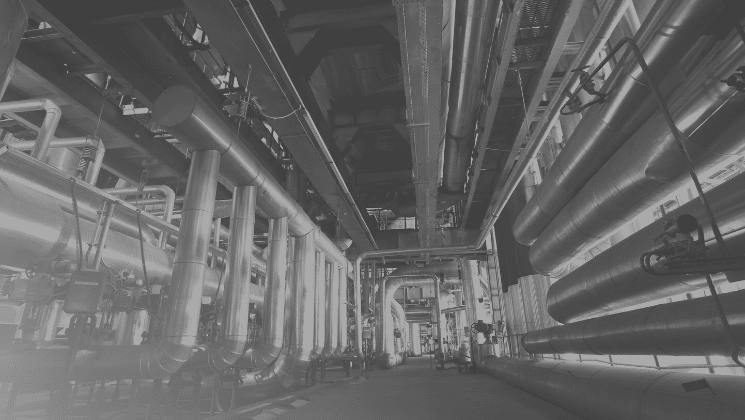Many of our tasks are automated.
But just imagine that you need to manually do some of those. For example, collect and process data from different areas of your plant. That would be a nightmare. And one would think it as a waste of time.
But someone’s got to do it, right?
That’s why automation has become a game changer for many businesses. It’s frequently heralded as the answer to many of our efficiency problems because it allows businesses to eliminate menial, repetitive work tasks.
Even in the maintenance industry, we benefit from all sorts of automation.
For example:
- Investing in a modern CMMS enables automation of data gathering, storage, and scrutiny, improving the precision of data while reducing costs.
- Technologies like machine learning provide understanding of equipment breakdown trends and intervals which facilitate automated maintenance planning and boost the efficiency of inventory management.
- Condition-monitoring tools automate the process of picking up signals that warn us of impending failure.
That’s all well and good. But the problem is, as industries adopt automated solutions, they neglect the basic processes upon which these solutions are implemented. As a result, many organisations automate inefficient or ineffective processes.
That’s why in this article, I talk about why you need to standardise your processes first before you start automating them.
The Pitfalls of Premature Automation
Automation is NOT a magic wand.
It does not instantly optimise your organisation’s operations. Yet somehow, we have people convinced that once they automate their process, they will increase efficiency.
But the truth is, many of them are actually at risk of what I call ‘Premature Automation’.
Premature automation refers to the implementation of automated solutions to processes that are not yet streamlined or standardised. It’s like putting a jet engine on a bicycle – the power is there, but the foundation isn’t ready for it.
By automating unstandardised processes—one that is chaotic, ineffective, or inefficient—you risk automating inefficiency and waste. You’re not going to get the best results. And so, it defeats the purpose of automation.
You also risk increasing errors. Without standardisation, each instance of a process might be carried out differently, leading to inconsistent and unpredictable results.
That’s why in the long term, this can cause you to incur higher costs. Rectifying mistakes post-automation can be costly and more complex than addressing them in a manual process.
Standardisation BEFORE Automation
If you want to maximise your automation, you want to have a streamlined process where you’ve taken most of the waste out. And you want this process to be repeatable and reliable. If it is always done slightly different, then you can’t standardise and automate it.
Successful automation is almost always preceded by thorough standardisation. And that’s because standardisation simplifies the complexity that automation has to handle. This makes the integration of automated systems more seamless and effective.
Now, you might say that this all sounds pretty obvious. But unfortunately, a lot of people don’t think about it and then do it the wrong way around.
And another big issue here is that a lot of organisations get software vendors who sell them fancy services and silver bullets. They are sold the “big benefits” of all these automations and fancy technology.
But it just doesn’t work. And if it does work, then it’s not the best that it could be.
The best thing to do is have a good, well-defined process that’s effective, that is efficient. That is repeatable. And then you can automate it.
Now the question is…
How do you effectively standardise your processes?
The first step is education.
Educate your team on how to make your processes more efficient.
They need to know how to eliminate waste from the day-to-day maintenance through better planning & scheduling.
They need to know the principles of effective preventive maintenance and how to eliminate all those PMs that don’t add value.
They need to know how to best tackle bad actors and implement defect elimination so they stop forever fixing, and start fixing forever.
If this is something your team needs, then schedule a call with me.
Let’s discuss how we can train your team so that they can create efficient work processes that can be standardised and automated.
Final Thoughts
Automation is a significant boon for businesses, enabling the elimination of repetitive tasks and freeing up resources for high-value work, which is especially transformative in the maintenance industry.
Tools like CMMS for data handling, machine learning for maintenance planning, and condition-monitoring devices are just some examples of how automation can make a difference. But the real issue arises when businesses automate processes without standardising them first, a misstep known as ‘Premature Automation’. This approach can lock in inefficiency and waste, leading to inconsistent outcomes and additional costs.
The key to successful automation is a well-defined, efficient, and repeatable process. Yet, many overlook this, jumping straight to automation, often enticed by software vendors promising big benefits without a solid foundation.
To avoid these pitfalls, it’s crucial to educate the team on enhancing efficiency and waste elimination in maintenance routines, understanding the principles of effective preventive maintenance, and how to apply them to create robust processes. Only then should automation come into play.


